We offer an interesting line of business in the countryside - breeding bulls and selling beef. Fattening small calves, like any species, requires great effort and hard physical work. If this does not scare you, feel free to grab the gobies for meat sales and get significant income. And our business plan will help you with this.
You will not need to register if you grow several bulls for your own consumption. But if you open the whole farm and sell meat in bulk, register as. Then get a certificate of quality meat. Without it, you cannot sell the product.
Buying and fattening calves
We are looking for a supplier
The supplier of young bulls can be large farms that breed animals. And then just grow your own bulls for fattening. Start a business on bulls with the purchase of 10 - 20 heads. Newcomers to this business should not start a business with a larger number of farmed animals. Already with the first profit and some experience buy more livestock.
Methods of keeping livestock and the necessary time to gain the necessary weight before slaughter depend on the breed of the animal. Better buy fast-growing breeds. It is equally important to consider the taste of the finished meat.
Milk calves are cheaper, but for them you have to buy a lot of milk. It is best to immediately buy bulls that already eat grass and other food. Plan your purchase in early May to sell beef meat in October next year.
Aberdeen-Angus Bulls
What kind of feed will you need?
It is very important to feed the animals correctly. The diet of young calves begins with milk. Each calf needs 8 liters daily. When the animal is one month old, teach it to feed: grass and hay. To do this, think in advance of a place for pasture.
From other feeds make stocks:
- potatoes;
- carrots;
- silo;
- cereals;
- melon crops;
- corn;
- fodder beet;
- salt.
For quick weight gain, feed bulls with succulent feeds. If you feed only grass or hay, the maintenance time will last a lot.
Water for weight gain is also important, so it is better to set up special drinkers inside the pens so that the bulls can drink when they want.
Change the diet with the season:
- summer - 30 kg of green fodder, 2 kg of concentrates;
- winter - 5 kg of hay, 20 kg of juicy feed, 3 kg of feed, 50 grams of salt, 2 - 3 kg of straw.
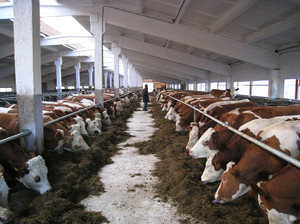 In addition to feeding the animals, you should be aware of other conditions for growing bulls:
In addition to feeding the animals, you should be aware of other conditions for growing bulls:
- show calves before you buy them to the vet;
- make the necessary vaccinations;
- teach young animals to grass from the 1st month;
- remove calves to pasture after dew dries;
- in heat they should be in the shade;
- clean the pens regularly, make sure the floor is dry;
- keep the temperature at least 10 degrees;
- in no case do not keep young animals without walking, otherwise they will be aggressive and painful;
- stop grazing with the onset of puberty puberty, as they become aggressive and dangerous, chain them.
Knowledge of all these nuances will save your business from failure.
- feeding in the morning;
- moving to the pen;
- in the heat - under a shed or back to the barn;
- in the evening - in the pen;
- evening feeding in the barn.
Cold keeping of calves for fattening
Territory Construction Farm
The business plan of breeding calves for meat requires the construction of special pens. Rent land for pasture. It is necessary for compulsory grazing of animals.
You need a regular barn. You can rent the old empty, but consider the cost of repairs. For each bull take 10 - 11 square meters. m. By and large, for fattening 20 bulls need about 3 acres of land.
Hiring workers
Even if you open a mini-farm, you need personnel to maintain it. For a farm of 10 to 20 steers, hire 2–3 assistants and a veterinarian.
If you do not have enough knowledge, experience in fattening bulls, contact a livestock specialist. For a small farm does not make sense to hire him for a permanent job, but you need to apply for a paid consultation. Zootekhnik will make a competent diet for animals.
The inseminator is needed only if you decide to breed cows.
Weight gaining bulls, selling meat
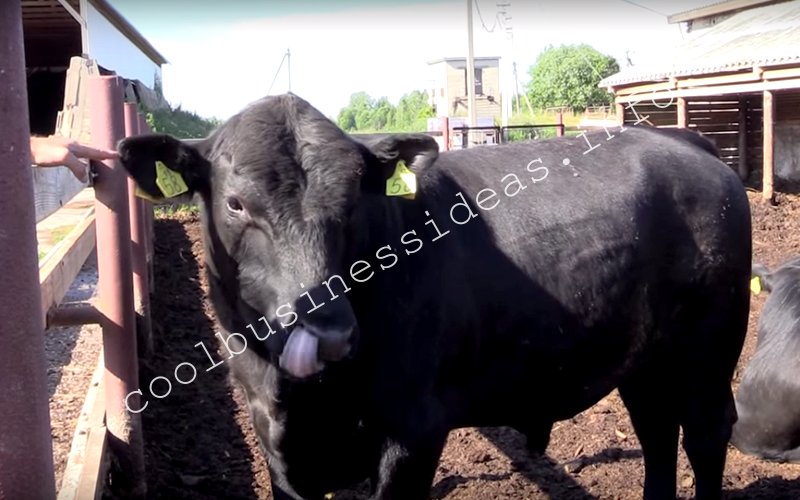 The growth rate of animals depends on proper nutrition and care. For 6 - 20 months (depending on the breed), the final weight of the bulls should increase to 350 - 500 kg. After that, start selling beef through pre-established channels.
The growth rate of animals depends on proper nutrition and care. For 6 - 20 months (depending on the breed), the final weight of the bulls should increase to 350 - 500 kg. After that, start selling beef through pre-established channels.
Growing young bulls consists of 3 periods:
- milk: 0–6 months;
- rearing: 6–15 months;
- final: 15–19 months.
There are several most profitable ways:
- sell to wholesalers, but at minimal cost;
- to supply beef to restaurants, supermarkets, private clients (the most profitable);
- sale in the markets, bazaars (not less profitable business);
- sales in;
- sales to sausages and sausages manufacturers.
In addition to growing bulls for meat, include a few profitable items in your business plan, for example, get engaged as well. This industry requires significantly less investment and physical strength, but it can bring you a good extra income. And if you have more manpower and start-up capital, check out.
Farm Equipment
Given that your business is growing bulls for meat, you do not have to buy expensive. In addition to the premises and pens, buy a few fixtures to simplify the care of animals.
Equipment list:
- stall equipment (dividers, fasteners);
- rubber lying mats;
- hoof trimming machine;
- individual, group drinkers;
- fencing for feeding;
- feed mixers.
Consider purchasing manure equipment additionally. Perhaps the first war or with a small number of bulls you can do without it.
With the growth of the farm and the number of gobies for fattening, the amount of equipment will have to be increased.
Business costs
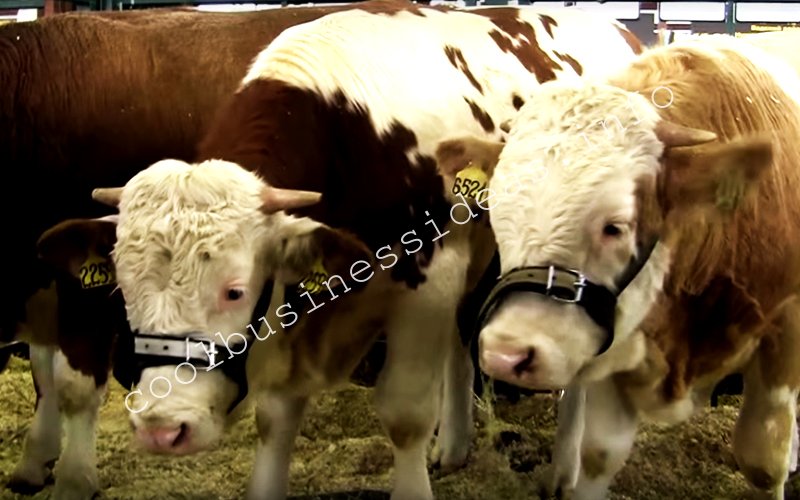 Approximate daily ration per head:
Approximate daily ration per head:
| Feed | Winter period | Summer period |
|---|---|---|
| Hay kg | 3.5 | 3 |
| Grass kg | 2 | - |
| Cereal milos, kg | 8 | - |
| Beets, kg | 4 | - |
| Carrot | 4 | - |
| Feed, kg | 3 | 4 |
| Green food, kg | - | 25 |
| Salt, g | 30 | 30 |
Salary costs for employees:
- the average salary is 35,000 rubles;
- 3 employees - 90,000 rubles / month;
- veterinarian - 40,000 rubles / month;
Farm opening and costs:
Total: 843 000 rub.
Revenue and profitability
Cash turnover of the business of growing bulls:
- the cost of 1 calf - 8 000 - 9 000 rubles;
- purchasing animals for a mini-farm (20 heads) - 160,000 - 180,000 rubles;
- the maintenance of one bull — about 11,000 rubles / year;
- 1 kg of beef - about 150 rubles;
- from the 1st bull - 250 kg of meat;
The price of beef: 350-590 rubles / kg.
Total: revenue is 750,000 rubles.
Beef cost by city:
| City of Russia | Average cost, rub. / Kg. |
|---|---|
| Moscow | 590 |
| Nizhny Novgorod | 408 |
| Khabarovsk | 405 |
| St. Petersburg | 369 |
| Krasnodar | 366 |
| Novosibirsk | 351 |
| Vladivostok | 350 |
| Voronezh | 338 |
| Yekaterinburg | 314 |
Total: revenue from 20 bulls - at least 1,570,000 rubles.
Business payback - about 2 years.
Profitability – 50%.
Market condition
The year 2015 was notable for a rise in prices for beef by 7.5%. The business of growing steers for meat steadily holds high positions. Many regions increase the number of cattle.
Regions with the largest population:
| Region | Livestock, th |
|---|---|
| Republic of Bashkortostan | 1228.6 |
| Republic of Tatarstan | 1038.9 |
| The Republic of Dagestan | 998.2 |
| Altai region | 842.8 |
| Rostov region | 612.2 |
| Orenburg region | 594.5 |
| Republic of Kalmykia | 553.7 |
| Krasnodar region | 542.8 |
| Transbaikal region | 506.4 |
| Novosibirsk region | 489.4 |
Regions with the least number of livestock:
| Region | Livestock, th |
|---|---|
| Khabarovsk region | 22.6 |
| Sakhalin region | 18.8 |
| Khanty-Mansiysk ao | 15.3 |
| Kamchatka Krai | 10.4 |
| Jewish ao. | 8.6 |
| Murmansk region | 7.5 |
| Magadan Region | 3.6 |
| Nenets AO | 1.5 |
| Yamalo-Nenets ao | 1.1 |
| Chukot ao | 0 |
Rising prices in different regions of the country are also different. Depending on the growth, you can choose the most suitable places for marketing:
The largest price increase is observed in such regions:
- Chukot ao - 37.43%
- Karachay-Cherkess - 17.39%
- Kamchatka Krai - 16.8%
- Bryansk region - 15.92%
- Tambov region - 15.64%
- Chechen Republic - 15.24%
- Republic of Mari El - 14.77%
- The Republic of Kalmykia - 14.74%
- Astrakhan region - 14.47%
What other directions are beneficial for the village?
1. Growing for agricultural work, for sports or for breeding expensive breeds for sales - all these areas will bring good earnings.
2. - this is not only the sale of healthy meat, but also the sale of sheared wool. But like any business on household, requires your physical work.
3. will not require you to make significant investments, because for the breeding of birds you do not need to specifically build a farm. If you are a villager, you can organize a profitable business in your yard.
In modern conditions, private business is a great way for people to solve financial problems. And for many it is not only a source of great profits, but also confidence in the future and the opportunity to have more free time.
However, not everyone succeeds in this matter. To do this, you first need to find a suitable business idea. Moreover, it should be unique in order for the business to generate income over the years, and the earnings from this idea would be quite substantial. Today, to start their own business, novice entrepreneurs can choose various types of income: breeding horses, cows, rabbits, and even exotic animals, such as sable. Quite a lot of people are attracted to breeding bulls for meat as a business.
When an entrepreneur with experience takes on business, he already knows that it is possible to build a successful business only if a combination of several factors is necessary: to choose the right idea and correctly implement it. In the embodiment of the conceived novice entrepreneur must calculate in advance every step, since any even the slightest mistake is the path to failure.
To avoid such undesirable consequences, you need to start a business organization with a business plan. This document should reflect all actions that will be carried out in the process of implementing the idea:
- project profitability assessment;
- financial investments;
- payback period of the business.
A clear illustration of how this document may look like can be goby breeding business plan.
Advantages of the business of breeding and growing bulls

Business registration
At first, registration is optional. This applies to those cases where your livestock is insignificant, among which you use only a few heads for sale. Quite differently, you will have to act if you set a goal to create a farm for growing bulls. Then you will be required to register with the tax office as an individual entrepreneur. Also, you will have to go through the procedure of issuing certificates that can confirm the quality of your meat. Their availability for you will be required if you are going to cooperate with supermarkets and restaurants that are interested in your products.
Describe the work of your business as follows: first you have to buy young, fatten it, and then you sell it for meat. To say exactly what your income will be is very difficult, because here you need to take into account the number of your livestock and the price that you set for your products at the time of sale.
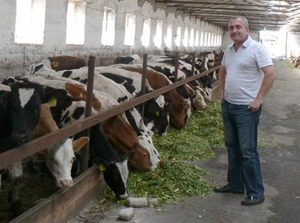 The first step for you should be young stock acquisitionYou will be fattened for sale. The easiest way to resolve this issue is to contact the nearest farm. However, you should approach this issue very thoroughly, since it is important to determine the number of heads and breed, as this will directly affect the payback period of your business.
The first step for you should be young stock acquisitionYou will be fattened for sale. The easiest way to resolve this issue is to contact the nearest farm. However, you should approach this issue very thoroughly, since it is important to determine the number of heads and breed, as this will directly affect the payback period of your business.
Breed
Do not underestimate importance of breed selectionbecause it will affect the timing of the maintenance and feeding of bulls for sale. Best of all, these are animals that quickly gain weight, and their meat has excellent taste.
- simmental;
- kazakh white-headed;
- hereford;
- sharolezskaya.
Maintenance and care of animals
No less important factors that affect the efficiency of your business are the care, feeding and conditions of livestock. Even before you start implementing your ideas, you should find out in what conditions the animals should be kept and what food they will have to provide.
Place for content
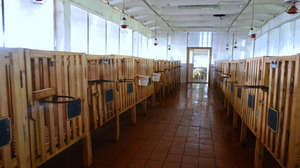 For growing bulls you will need special penwhich will allow you to walk animals in it. Therefore, one of the cost items for you will be the lease of land for pasture. Although the summer season is enough for the bulls to gain the necessary weight, however, you cannot do without walking.
For growing bulls you will need special penwhich will allow you to walk animals in it. Therefore, one of the cost items for you will be the lease of land for pasture. Although the summer season is enough for the bulls to gain the necessary weight, however, you cannot do without walking.
If the calves are in the stall all the time, they will grow aggressive, and in addition to this they will often get sick. Therefore, if you want to get a good weight gain and high-quality meat, you should pay special attention to creating suitable conditions for keeping and grazing livestock.
You will also have to take care of the pen itself, keeping it clean. Need to follow so that it was dry and clean. If you originally planned to organize a farm with a population of several dozen steers, then you cannot do without helpers so that you can regularly clean and feed the animals.
How to feed the bulls?
The basis of the diet of young calves should be milk. One animal will need approximately 8 liters per day. Upon reaching 1 month, you can begin to make adjustments to the diet, partially replacing milk with feed. At the same time, it is necessary to release animals on pasture.
But in addition to the grass, which bulls will eat while grazing in the pasture, you should give other products - potatoes, carrots, corn carrots, silage, grains and corn.
You must ensure that your animals have water in the required quantity. To do this, you have to arrange a special drinkers.
Good nutrition is one of the key factors in ensuring quick weight gain. Therefore, to address this issue must be approached very carefully.
Hired staff
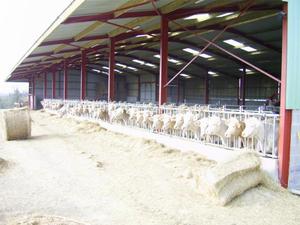 It is unlikely that you alone have enough strength to maintain a mini-farm. Consider that you will have to solve many questions: every day to feed the animals, bring them to pasture, keep the stall clean.
It is unlikely that you alone have enough strength to maintain a mini-farm. Consider that you will have to solve many questions: every day to feed the animals, bring them to pasture, keep the stall clean.
You assistants will be required - people who you entrust the work of caring for animals. Take seriously the choice of staff - these people should be responsible for their work, so that you are satisfied with the conditions of the animals. For example, if your farm has two dozen heads, then you will need to hire 2-3 people.
You will also need veterinarian services. He will do prophylactic vaccinations and observe the animals in order to identify the disease at the first symptoms and start treatment. Here you can do it in two ways: negotiate with a local veterinarian for a fee, so that he periodically examines your animals, or you can include a specially trained person on your staff.
How much can you earn on breeding bulls at home?
Usually, up to the moment when animals gain optimal weight for slaughtering meat, one has to wait from 1.5 years to 20 months. At this point, the calf can weigh from 350 to 500 kg. In each case, the prices for the purchase of meat will be different, because here you need to take into account the place of residence and distribution channels. You will benefit a lot if you directly cooperate with restaurants or supermarkets with which you will supply your products. Cooperating with wholesalers, your profit will not be so big.
You need to rely on the fact that you will return the invested funds in the organization of the business of growing bulls in about 1-2 years. Given this, the profitability of such a business seems to be quite high, but you have to spend a lot of time and effort to implement everything correctly. In this case, success is achieved only by those people who are not afraid of physical work and have a sincere desire to be established as professionals in this field.
Conclusion
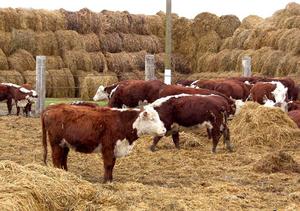 The business of growing bulls for sale for meat is attractive because with small time costs and minimal financial investment you can get a tangible profit. But this does not mean that everything is so simple. An entrepreneur should not only have certain knowledge, but also have a desire to work. One of the first questions that he will have to decide is to choose the right breed.
The business of growing bulls for sale for meat is attractive because with small time costs and minimal financial investment you can get a tangible profit. But this does not mean that everything is so simple. An entrepreneur should not only have certain knowledge, but also have a desire to work. One of the first questions that he will have to decide is to choose the right breed.
Equally important are the conditions in which you will keep animals. Therefore, you should pay special attention to this moment. It is important not only to resolve the issue with food, but to think about creating a place for grazing animals. After all, without this it is impossible to count on the fact that you can grow strong and healthy gobies.
Growing bulls is a promising type of business for farmers and rural residents. The meaning of this business idea is to buy half-year-old calves, feeding for a year and selling for meat. The business payback period is ~ 2 years. The article will consider growing bulls as a business at home from scratch.
Advantages and disadvantages of starting a bull-breeding business
The main consumers of pig meat are butcher shops (“Meat Eaters”) and shops, markets, restaurants and supermarkets. Consider the key advantages and disadvantages of creating this business.
| Benefits | disadvantages |
| No large initial purchase costs for calves | Availability of specific expertise in grooming, treating, feeding calves |
| Ability to independently monitor the bulls | The main risk is marketing, inability to sell their meat products in the required amount. |
| Large product sales market | Business becomes profitable when there are more than ~ 12 heads in the herd |
Breeds of cattle (cattle) are classified into the following breeds: dairy, meat, meat and dairy breeds.
- Dairy breeds include: black-motley, Kholmogory, Yaroslavl, red steppe, Ayrshire, Holstein, brown Schwyz, Gernsey, Jersey, Tagil.
- Meat breeds include: Kazakh, Kazakh white-headed, Kalmyk, gray Ukrainian, Kian, Aberdeen-Angus, Lincol, Highlen, Saler, Aquitaine light, Charolais, Volyn.
- Meat and dairy breeds include: Atau, Bestuzhevskaya, Caucasian brown, Kostroma, brown Carpathian, red Tambov, Simmental, Sychevskaya, brown Schwyz, Jura.
The figure below shows breeds of cattle. The most common breeds of gobies are: Simmental, Hereford, Kazakh white-headed, Sharolese.
Let us consider in more detail the features of the breeds of gobies.
| Breed | Features | Slaughter exit |
| Simmental | Bred in Switzerland. +) Ease of calving .-) Breed meat and dairy. |
58-62% |
| Hereford | Bred in the USA at the beginning of the 20th century. +) By temperament, the bulls are very calm and obedient. Meat without excessive salting, has a high taste | 60-70% |
| Kazakh Whitehead | Launched on the territory of Kazakhstan. +) It tolerates heat and frost. -) Milk production is low. |
up to 67% |
| Sharolezskaya | Bred in Europe Hereditarypredisposition tothe emergence of doppellers. +) The tendency to prolonged weight gain with minimal fat (up to 4%).+) Gobies are very hardy.-) difficult calving (up to 80% of cows need help) |
60-70% |
Growing bulls as a business: a general scheme
The main business model of this business is the presence of its own (rental) site and the purchase of six-month-old young calves of meat breeds, growing them for a year and selling. To pay off a business you need to grow more than 10 bulls. At the same time it is necessary to keep animals in good conditions, take care of their health and carry out good nutrition. Up to 20 individuals can do self-care, more will require additional staff.
Business registration
The following business forms will be suitable for business registration: LPH (personal subsidiary farm), IP (individual entrepreneur) or peasant farm (peasant farm).
For growing bulls suitable form of business - KFH. The order of its registration is carried out as for IP. The whole procedure for registering a farm is described in Article 5 of the Law on Farm Production. Read in more detail → "". Below are the steps to register:
- Agreement on the creation of a farm. (required if additional partners are involved in the business).
- Receipt of payment of state duty (cost 800 rubles.);
- A certified statement of state. registration of a farm with a notary in the form number Р21001;
- Statement on the transition to special tax regimes: UAT, STS (otherwise it will be the default OCHO);
- Copy of all passport pages.
It is recommended that when registering KFH, immediately switch to special tax regimes: UAT or STS - this will save on tax payments and simplify the procedure for paying taxes. It is important to remember that if applications for the transition to the special taxation regime were not filed during the registration of the KFH, it will only be possible to re-submit the application by the end of the calendar year (no later than December 31 of the year preceding the year), and in the current year taxation system.
Taxation system - single agricultural tax (UAT)
Tax rate — 6%
The uniform agricultural tax is canceled if the share of agricultural production is less than 70% and the CES (general taxation system) is applied to the producer.
The video below shows the peculiarities of the accrual of the unified agricultural tax.
When the simplified tax system (USN), you must select one of the modes with different calculation of tax rates:
- gross income (tax rate 6%);
- income minus expenditure (tax rate 15%).
Important! If a loss was incurred at the simplified taxation system (by income minus expense), you still need to pay a minimum fixed contribution of 1% of the income received.
Initially, accounting can be outsourced to an accounting company.
The figure below presents a comparison of other organizational and legal forms.
![]()
Care of the bulls
Breeding gobies is possible in two ways: stall, free walking. In the stall way, bullheads gain weight faster, but a standing image increases the aggressiveness of animals and reduces their immunity to diseases, so regular walking must be done. Walk bulls only before puberty. Strong and adult animals are dangerous to human life. Keep up the bulls in the barn, in the hot season - under a canopy. Be sure to fasten them with chains. Purchased half-year-old calves must be shown to a veterinarian for testing and vaccinations. It is necessary to teach young animals to grass from the 1st month, bring calves to pasture after the dew dries.
Be sure to get out of the pen in animals. When growing 20 bulls need daily cleaning. The floor in the pen should be dry. In winter, the temperature should not fall below -10ºС. Usually, in order to fulfill this condition, the room can be additionally not heated, but they should be insulated. For the insulation of the barn suitable polyurethane foam with a thickness of 8-10 cm.
The form shows the peasant farm (KFH) of Alexander Moskvin and care for the bulls of the Aberdeen-Angus breed.
Feed bulls for fattening
Calculate the approximate cost of growing 20 bulls. Milk calves feed with milk, consumption per day up to 8 liters. After one month, gradually accustom gobies to feed and let them out to pasture. Too early to bring animals to pasture, dew on the grass during morning grazing should dry. Keep the calf standing in the shade in hot weather. Diversify the diet of bulls. In addition to grass and hay, give calves and other feed: carrots; silage; potatoes; salt; fodder beet; corn leaves and cobs; melons and grains; dried grass.
Gobies slowly gain weight if they eat only green fodder. Therefore, in the diet should prevail not only hay and grass, and juicy food.
In summer, one goby needs 2 kg to speed up the weight gain. concentrates and 30-35 kg. green feed. In winter, the diet should be more diverse: 20 kg. juicy feed, 4-5 kg. hay, 2-3 kg. straw, 3 kg. mixed fodder, 60 gr. tricalcium phosphate, 50 gr. salt. Calves will also need plenty of water. Give your animals drinkers so they can drink regularly.
Estimation of costs and profits
Each animal requires 10-11 m² of space. To grow 20 bulls, you will need 2-3 acres of land. If you have no land, buy it in an inexpensive area for 3000-5000 rubles. for a hundred. Build an inexpensive barn using simple materials. Taking into account the cost of construction and purchase of land, you will spend 100000-150000 rubles.
When prepare buildings to receive animals, get gobies. The cost of one animal - 8000-9000 rubles. depending on weight and age. Dairy calves are cheaper, but they will be fed with milk. You can use powdered milk, but you need a large amount of it. Therefore, the goby eating grass is cheaper and easier to maintain. 20 bulls will cost 160,000 rubles.
Be sure to take care of the feed. If you have your land, grow feed yourself, if not, you will have to buy it. The cost of food per bull for 12 months is 10,000-12,000 rubles. For 20 bulls - 200000-240000 rubles. The business of growing bulls is characterized by rapid payback. A key success factor in breeding bulls is creating a distribution network of buyers.
To animals quickly gained weight, keep them well-fed and well-groomed. With good care, the weight of bulls will be 350-500 kg. Wholesalers will buy them for at least 36000-40000 rubles. Given the cost of the maximum purchase of land, feed, steers, construction of buildings, payback you will reach in a year, and the profit will be 250000-300000 rubles. If the costs were minimal, buildings, land feed was not bought, then the profit will be even greater. For grooming up to 20 steers, one person or a family business is enough. When scaling will require additional staff and expansion of space.
Evaluation of the attractiveness of the business magazine website
| Business profitability |      (3.8 out of 5) (3.8 out of 5) |
Business appeal
|
| Project payback |      (4.0 out of 5) (4.0 out of 5) |
|
| Ease of creating a business |      (3.5 out of 5) (3.5 out of 5) |
|
| The business of growing bulls is profitable with a payback period of initial costs of ~ 2 years. The key success of the business is the availability of the distribution network: retail stores, meat markets, wholesale customers, as well as the presence of specific knowledge about the care and feeding of calves. | ||
The business of growing calves for meat can bring significant profits, but for this you will have to create suitable conditions of detention and make proper diet for calves. In order not to spend a lot of time on taking care of animals at home, it is recommended to acquire young animals already at the end of April, so that they can be let out right away for release. The absence of pasture next to the barnyard will not be a serious obstacle. You can make a special pen, choosing a place for it in the adjacent territory, remembering that there should be 8-12 square meters per head. m
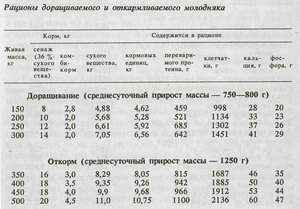 In winter, calves are given as feed. hay, root crops and feed. In summer, the basis of the diet is seasonal food - fresh grass. In order for the young growth not to be lacking in feed, it is harvested from the calculation of the average daily rate:
In winter, calves are given as feed. hay, root crops and feed. In summer, the basis of the diet is seasonal food - fresh grass. In order for the young growth not to be lacking in feed, it is harvested from the calculation of the average daily rate:
- hay - 3 kg;
- root vegetables - 2 to 4 kg;
- concentrates - 1.5 kg per head.
One-year-old calves need to be given double the rate of succulent feed, and the number of feed reduced to 1 kg. The livestock ration usually has the following composition:
- Concentrate from the concentrate.
- Succulent feed.
- Grass or hay.
When the calves are 6 months old, they can give food waste. Potatoes are quite heavy food for calves, so it needs to be prepared - boil and crush.
When raising livestock at home, green fodder begins to be given in small portions, since abrupt dietary change may cause problems with digestion, and this will affect weight gain. The first weeks are allowed to add 10-15 kg of feed per head per day to the ration - it is given only after roughage. By the end of the week, its share should reach 70 kg. Twice a day, you need to give concentrates with the addition of 50-100 grams of salt.
The fastest way to achieve the desired weight gain is to feed the animals with cereals, legumes and asterites. It should be leaves that are a rich source of fiber, nutrients and vitamins.
When growing livestock at home, you need to regularly take care of the room itselfwhere calves are kept - it should always be dry in it, for this it is necessary to remove the contaminated layer every day, to change the litter once a month.
How to start growing?
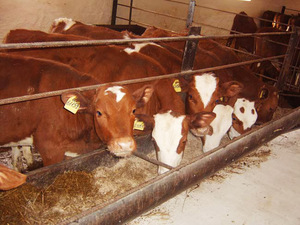 Most of all, this business is suitable for people in rural areas: this business requires not much time during the year. It is enough to spend a little time and energy in the summer to get a good amount for a bullhead handed to meat in the fall.
Most of all, this business is suitable for people in rural areas: this business requires not much time during the year. It is enough to spend a little time and energy in the summer to get a good amount for a bullhead handed to meat in the fall.
The most suitable place for the purchase of young stock is dairy farms, where a large number of animals are needed. In this case, you will be sure that the acquired breed is the one that was declared by the seller. When choosing suitable breed It is recommended to buy those that are grown in this region. Due to this, young animals will not experience difficulties with acclimatization when breeding.
Cattle selection
When choosing young stock for growing for meat it is necessary take into account the following characteristics:
- The age should be 3-4 months;
- Weight - about 100 kg.
It is not so difficult to care for young cattle, it is enough for him to simply find suitable feeds. Those who are going to grow only a few heads in order to have a few bulls in their personal economy, and it is not necessary to pass part on meat. If you plan to plant a dozen heads, then you will have to draw up the documents of a private entrepreneur.
When growing a large number of bulls (10 heads), you maintenance staff required. The shepherd will be engaged in feeding the calves, and the cattlemen will provide conditions for feeding and will maintain in good condition the room where the cattle is kept.
Also, you will often have to use the services of a veterinarian: to make preventive vaccinations and help in the treatment of diseases of cattle.
Features fattening chick for meat
Growing bulls at home is not so easy for a beginner entrepreneur. He must have a certain theoretical base, which will help him to choose the right feed for livestock, as well as create favorable conditions for the maintenance and treatment. In the process of growing calves for meat it is customary to single out three main stages:
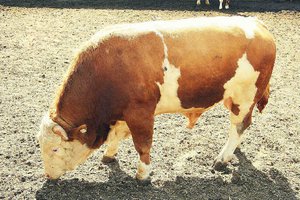
A significant gain can be achieved if the calves are prepared optimal power schedule: they need to be fed three times a day at regular intervals. Before putting feed to calves, it must be prepared in a certain way: the grain crops must be chopped or steamed, the potatoes must be boiled and kneaded, and the roots must be peeled and washed. For better digestion, young grass must first be woven, it is added to the diet in small portions, gradually increasing the amount.
The presence in the diet of calves feed, exceeding their physiological need, has a positive effect on the development of muscles, weight gain, meat quality.
Calves, which for a short time were given food in insufficient quantities, already in the first weeks after transferring to a normal diet, they begin to grow actively. If, during the whole season, the young growth will receive less food, this leads to a lag in development.
A great help for the farmer is the availability of processing plants nearby - sugar, brewery or distillery. From them you can get food waste production, which can be given to the bulls already at six months of age.
During the rearing of calves for meat, special attention should be paid to the quality and quantity of feed. If we take into account these and other recommendations for growing, then one-year-old calves can gain 7 times more weight, unlike birth rates, and at the age of 1.5 years they can have at least a tenfold weight gain.
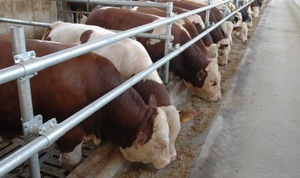 Any farmer who was engaged in raising large livestock for meat can confirm that this is a very profitable occupation: in the absence of large labor costs, it is possible in the short term to create favorable conditions for the growth of calves and weight gain.
Any farmer who was engaged in raising large livestock for meat can confirm that this is a very profitable occupation: in the absence of large labor costs, it is possible in the short term to create favorable conditions for the growth of calves and weight gain.
One of the key factors in getting high quality meat fast is providing calves high-quality feed in large quantities. Especially calves aged 6 to 12 months need them. If the animals are poorly fed, then they begin to actively grow bones and ligaments, and the meat becomes tough.
Fattening methods
When growing calves for meat, you can choose one of the following methods of fattening:
- Short. It takes a short period of time up to 1.5 years, after its completion the weight of bulls can be 400 kg or more.
- Long lasting. Involves active feeding of young stock for 7-8 months. During this period, weight gain can be very fast, and the figure can reach 500 kg. Meat is of the highest quality - it becomes fat and juicy.
- Average. Intermediate. This variant of fattening involves providing animals with an increased amount of feed compared to the previous method. Takes 5-6 months time. According to the results of rearing animals gain in weight 400-450 kg.
Monthly calves are allowed to be given for feeding in pasture. Here they can be up to 16 hours a day. However, taking into account their fragile organism, it is necessary to take care that water and shaded areas are present at the grazing site.
Entrepreneurial activity in the field of agriculture has recently become popular among beginners and experienced businessmen. If you put the case on stream, you can get tangible profits, since the supply of many types of products from abroad is temporarily suspended. Directions in this industry a lot. Some require large expenditures, and some can be mastered by investing a minimum of investments. Analyze the market and select the right niche. A successful solution can be a business plan of growing bulls! Realizing meat to shops and private buyers, you will begin to receive high incomes, gradually expanding your farm.
Our business valuation:
Starting investment - from 280,000 rubles.
Market saturation is average.
The difficulty of starting a business is 5/10.
Practice shows that growing bulls at home as a business will become a highly profitable business for those entrepreneurs who have their own country plot or can inexpensively rent free space.
The meaning of entrepreneurial activity is to acquire livestock bulls, their fattening and the further sale of meat. Evaluate the benefits that the business of breeding gobies for meat gives:
- Relatively low startup costs. The main focus here is on time and physical costs.
- Quick payback - no more than 2 years.
- A huge market. Both private and wholesale consumers will be interested in buying meat products.
Rate your strengths and capabilities! This is a direction where you don’t have to sit still - even if you hire a whole staff. No doubt? Then you can safely make a business plan for breeding and growing bulls for meat.
Nuances of business registration
If you are engaged in an entrepreneurial activity “for yourself”, then no documents can be collected. But in this case, you do not go to large markets, and will sell products to friends. Growing steers for meat at home will not bring big profits.
When planning to launch a farm that will supply meat to large buyers (shops, slaughterhouses and restaurants), register your activities. And it is necessary not only to register a business as an individual entrepreneur or an LLC and register with the tax inspectorate, but also to obtain all permits for goods in the veterinary service. In the future, you will regularly have to confirm the quality of the meat.
Purchase of livestock
So that the animals do not hurt and gain weight, take care of purchasing healthy calves from reliable suppliers. Purchase a plan for the beginning of May to sell fresh meat in the autumn of next year.
When thinking about where to buy bulls for fattening, contact your local livestock farmers. Then you can personally inspect the animals and select for yourself the best. Also reduced the cost of transporting calves.
The calculation shows that a novice entrepreneur should not start a business with the purchase of a large herd - 10 goals would be enough. At first, it would not hurt to understand the basics of breeding and learn how to care for animals. And in the future, when it starts to bring the first profit, you can expand the farm.
Buying dairy calves is not always advisable - spending on special food and milk is coming. The best option - young bulls, which can already eat grass and “adult” feed. Obligatory examination of animals by a veterinarian and vaccinations.
As for the breed of animals, it is important to choose those that differ rapid growth and a set of commodity weight - then the profit will get faster. Note the following meat breeds fattening steers that are popular among farmers - Kazakh white-headed, Sharolese, Hereford, black-fleeced.
The price of gobies for fattening largely depends on the specific breed and farm where the purchase will be carried out. On average, 1 calf can be bought for 8000-15000 rubles.
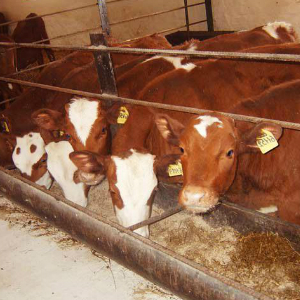
Growing gobies for fattening implies the presence of special pens - in fact, it is an ordinary barn. Fit an empty shed under it. It will need to be carefully insulated and equipped here feeders and drinking bowls. If you are going to do without additional thermal insulation of the stall, make sure that the temperature here in the winter does not fall below -10˚C.
In addition to pens, a free area for walking cattle is required. Animals can be maintained without walking, but then they become very aggressive, which will bring a lot of problems to the entrepreneur. Therefore, it is better that calves have pasture where they can eat grass in summer. 10 bulls need ≈3 weave land. But the “freedom” of animals with the onset of puberty should be limited - they should not spend as much time on free grazing as before!
In the city (even in the territory of a private house) you will not provide the animals with proper conditions of detention. In addition, not all neighbors will be happy to see a grazing flock behind their fence. The bull farm must be located outside the city! Rental sites here are not too high, which significantly reduces the cost of the entrepreneur at the start.
Pasture is better to fence the fence so that the bulls do not disperse.
Most likely, fattening calves for meat will require a separate room for the slaughter of livestock. This can be done in open areas, but this process is not always “clean” - it is much more hygienic to slaughter animals in covered areas.
How to feed the bulls?
Bullheads will gain weight faster if they are provided with the correct feeding ration. For small calves, up to 8 liters of milk each will be required. But from the age of one month they can be accustomed to the food that adults consume.
In addition to grass and hay, animals need another feed. Here is a list of what to feed the bulls:
- silage,
- fodder beet,
- cereals,
- corn,
- potatoes,
- carrot.
Do not forget about water. Young gobies drink a lot - so immediately consider bulk drinkers.
To comply with the rules of fattening, to the food for animals, farmers often add special concentrates - salts, tricalcium phosphate, vitamins. The more varied the diet of animals, the more delicious the meat will be at the outlet. And a quality product is the key to attracting customers.
Is it possible to cope on your own?
The technology of fattening calves is quite complicated. During the period of business planning, many nuances have to be studied in order for the business to bring a decent profit.
As practice shows, to cope alone even with a small herd will be very difficult! Animals need to be fed several times a day, clean the stall, send for walking. If possible, hire 2-3 people with experience in livestock farms.
Keeping calves for fattening implies your continued presence on the farm. If there is no such possibility, it is better to hire a person who will keep control over the conduct of affairs. It is important to monitor both the feeding process and the conditions of the animals. Professionals should be invited to slaughter. The process of cutting carcasses requires compliance with certain rules - a non-professional can not cope.
Be sure to include regular veterinary check-ups in the costs of growing a bull. The possibility of infection of animals with diseases is not excluded - you need to carefully monitor this!
Meat sales and customer base
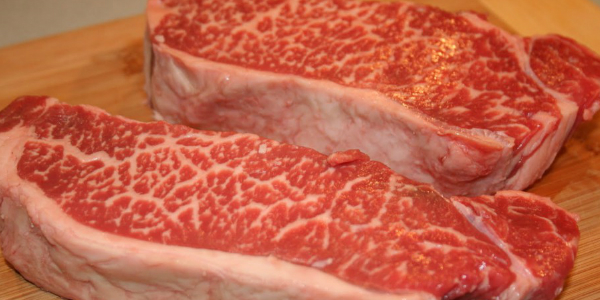
If you organize the proper fattening of animals, they will gain their “commodity” weight in 6-18 months - it all depends on the specific breed. When animals reach a mass of 350-500 kg, you can begin selling meat.
Breeding and fattening calves in the home will be much more profitable if you start to negotiate cooperation with wholesale buyers of meat at the stage of developing a business plan. Then the goods will not be stale in the freezers.
There are several options for selling the final product:
- sale to wholesalers
- selling small quantities of meat to restaurants and private clients,
- opening your own point in the local grocery market.
Sales of meat in small lots is much more profitable. But not always the novice farmer has the opportunity in a short time to build up a customer base. There is always the chance that large quantities of final products will remain not sold out. Therefore, at first it is better to consider all sales options.
In the future, when the livestock livestock grows, bulls can be crossed. And then it is possible to sell calves for fattening - in this case, you yourself become a seller of calves. Excellent "addition" to the existing business.
Growing bulls for sale and for meat is not the only way to do business. Individual buyers also sell animal skins. This is where the professional qualities of the miner are important - the skins should be well trimmed and prepared for sale.
With the development of the farm profitability only increases. The herd will grow, and there will be more customers.
The profitability of growing bulls
- Purchase of 10 calves - 100,000 rubles.
- Arrangement of pens and pastures - from 50,000 rubles.
- Purchase of feed for 6 months in advance - from 50,000 rubles.
- Buying a roomy freezer and inventory - from 80,000 rubles.
It turns out that you will spend at least 280,000 rubles on the organization of a small farm. If you compare with some other areas - not such a big waste.
On average, feeding calves takes 10,000-15,000 rubles / year per animal. It is important to consider other variable costs:
- payment of wages to 2-3 workers - 40000 rubles / month.
- regular calls of veterinarians - from 20,000 rubles / month.
- plot rent - from 10,000 rubles / month.
Variable costs will be lower if you start a business on your own country site.
The benefit will be noticeable not earlier than in a year. During this time, the animals will have time to gain weight for slaughter. Depending on the specific breed of the bull and the quality of its fattening, you will have at least 250 kg of meat. Selling meat at a wholesale price of 150 rubles / kg, you get up to 38,000 rubles. And this is only 1 bull. After selling the meat of all 10 animals that you bought, the proceeds will be up to 380,000 rubles. Thus, you leave the break-even point in a year! The net profit again spend on the purchase of livestock for further cultivation.
It will be difficult to identify the most effective fattening of bulls - many farmers follow their own path of development. It will be useful to visit several existing farms in order to gain experience and learn from businessmen their ways of doing business. But this direction, as practice shows, very rarely does not pay for itself. Already after 3-5 years, you can achieve good progress by developing your farm and looking for new sales channels.
